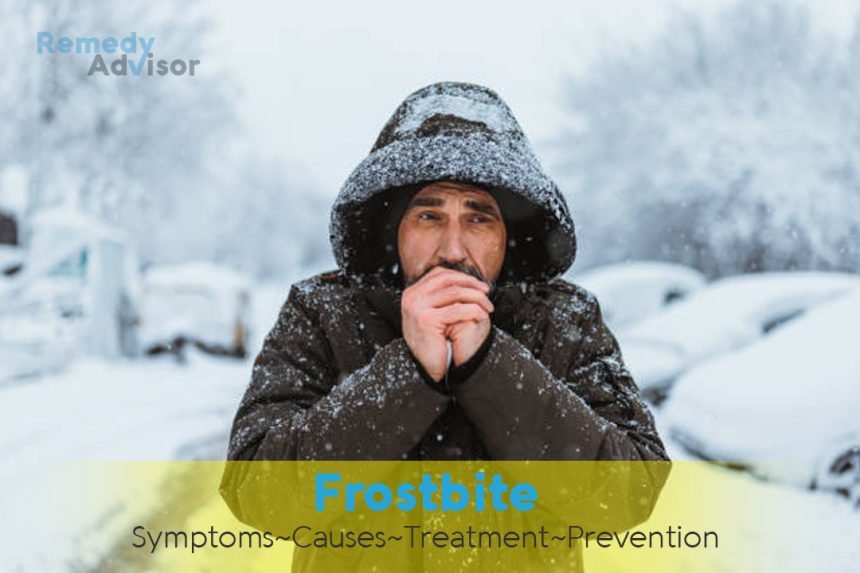What is it
Frostbite can be insidious if you’ve been out in the cold a while and your extremities already feel cold and numb, you may not notice that it has set in. Frostbite comes in three categories, from mild to serious: frost-nip, superficial frostbite, and deep frostbite. The first hint of frost-nip is numbness, followed by a whitening of the tissue a change that can take place very quickly. Frost-nip usually affects the nose, ears, hands, or feet.
If frost-nip progresses to superficial frostbite, the area will appear very white and waxy and will feel hard on the surface, yet will have its normal resilience in the lower layers. In deep frostbite, the tissues can turn blotchy or blue and will be very hard, without any underlying resilience.
Symptoms
- Numb, cold skin usually on the nose, ears, hands, or feet that initially whitens, then hardens on the surface.
- In deep frostbite, skin is blotchy or blue and very hard. Blistering may also occur.
What causes it
Frostbite occurs from exposure to cold weather. Temperature and length of exposure determine how quickly frostbite occurs, and the wind-chill factor is also critical. At 30’F, with no wind, exposed hands would only become frostbitten after prolonged exposure. But at the same temperature in a 40-mile-an-hour wind, the wind chill equivalent is 4T, and frostbite becomes a real risk. Risk of frostbite also increases if you are wearing damp clothing, have consumed alcohol, have a below-average percentage of body fat, or have a previous history of frostbite.
What if you do nothing
If you do not get out of the cold, frost-nip will progress to frostbite and at that point, medical attention is required to avoid severe damage to skin.
Home remedies
While the treatment for each type of frostbite varies, several guidelines apply to all three types:
- Never massage or rub frostbitten areas (with or without snow).
- Do not apply any ointments.
- Get out of the cold, if possible.
- Don’t drink alcoholic beverages.
When checking any frostbitten part of the body, press very gently. Be careful not to hit, bump, or rub the area.
For frost-nip
Apply warmth directly. Blow on the areas, or get someone else to do so; if your nose is frost nipped, apply your warm hands. If it’s your hands that are freezing, put them in your warm armpits. Your skin will probably bum and tingle as it warms, but there should be no lasting injury.
For superficial frostbite, warm the affected areas
Superficial frostbite requires medical attention, but there are some steps you should take first. Once you’ve gotten out of the cold, warm the area, preferably by immersion in warm water (100°F to 105°F a temperature that should feel comfortably warm, but not hot, to undamaged skin). The warming process may be painful. Keep adding warm water as necessary, but take care that the water doesn’t get too hot.
Avoid dry heat or uncontrolled heat sources such as campfires. Also, don’t try to walk on frostbitten feet, and avoid the temptation to rub frostbitten hands or fingers. On the way to the emergency room or doctor, keep the area warm.
For deep frostbite, get to an emergency room
Don’t try to administer first aid or thaw the tissue. Wrap the frozen area in a blanket or other soft material to prevent bruising, and keep it elevated on the way to the hospital.
Prevention
Proper clothing and some commonsense precautions are the key to preventing frostbite.
Be careful when temperatures dip below 20°F
The risk of frostbite is much higher, so plan carefully before going outside. A cold wind will accentuate the chilling of tissue, and altitude is also a factor: it’s generally colder at higher elevations.
Use skin moisturizer before going outside
This will slow the loss of body heat. Apply it to your hands, face, and any other body part that may become exposed to the cold.
Dress appropriately for the conditions
Dress in layers and make sure that the outer layer is windproof and waterproof Footwear should be watertight. Make sure ears, nose, and face are adequately covered. For extra protection, wear a face mask.
Wear heavy mittens instead of gloves
When the fingers are together in the mitten, their collective body heat keeps the hand warm.
Don’t drink alcoholic beverages
Although alcohol gives the illusion of warmth, in addition to causing heat loss by widening the blood vessels, alcohol may also cause you to ignore critical frostbite signals.
Don’t smoke
Nicotine impairs blood flow by constricting small arteries in the skin and the extremities.
Never touch very cold metal with your bare hands
Moisture on the skin will cause it to stick to the metal and become damaged.
Be careful at the gas pump
Gasoline splashed on exposed skin in freezing temperatures lowers skin temperature, making it more susceptible to frostbite.
Equip your car
When traveling during the winter, keep a blanket or sleeping bag in your car at all times. If weather conditions force you to pull over to the side of the road, use the covers or bag to keep warm. Unless you’re properly dressed, don’t leave the car in frigid weather; you put yourself at high risk.







